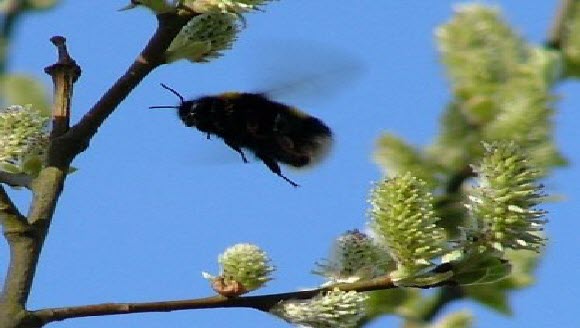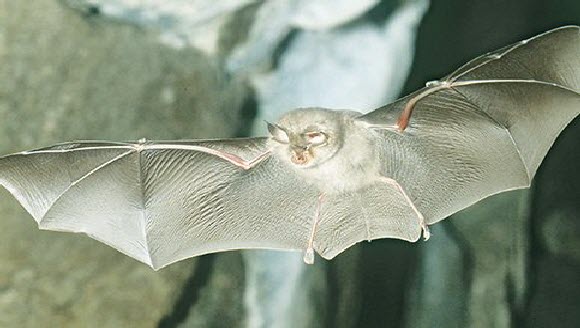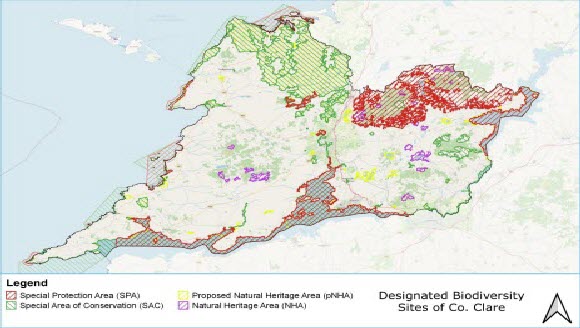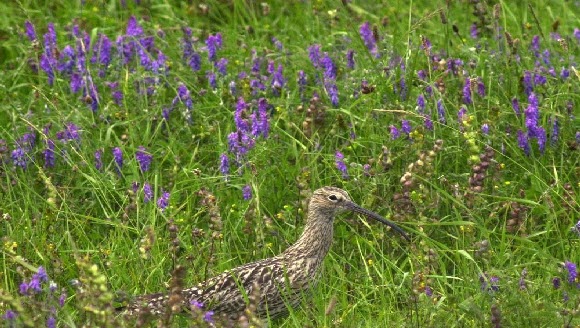Biodiversity
County Clare is home to some of the most special and valuable habitats, species and biodiversity in Ireland. We need only to look out our own windows to see birds soaring in the sky and bees buzzing around the flowers in our gardens, all of which bring joy to our hearts.
Biodiversity provides vital ecosystem services that sustain life on earth, important for food production, water and air quality, climate change mitigation, healthy soil, medical advances, as well as scientific, cultural, educational, recreational and well-being benefits. Our biodiversity is now facing an existential threat worldwide and in Ireland. Around 1 million species already face extinction, many within decades and this is at an acceleration pace, unless action is taken to reduce the intensity of drivers of biodiversity loss.
The Clare Heritage Officer Programme has been to the forefront in developing positive and impactful measures for the protection of our biodiversity. Our Council wants to take action to meet its responsibilities to promote and sustain Biodiversity for future generations to enjoy..

What is biodiversity?
Biodiversity can be broken down and discussed at three separate levels as follows:
- Genetic diversity, which refers to the unique DNA which an individual plant or animal possesses, and which is essential for the maintenance of healthy, functioning populations of different species.
- Species diversity, which is simply the variety of all plants, animals, fungi, algae, and other living organisms, both wild and domesticated. Over 31,000 species are found in Ireland, while species new to Ireland, and often new to science, continue to be recorded here.
- Ecosystems diversity, which are the relationships between different species, their habitats and their local, non-living environment (geology, hydrology, micro-climate).
Biodiversity is not a standalone entity, but instead relates to all areas of life including humans and heritage from the cultural to the built. Barn owls and house martins inhabit buildings while Fionn MacCumhaill and the salmon of knowledge or fairy hawthorn trees manifest as stories relating to our cultural inheritance.
Biodiversity in County Clare
The health of humans and our environment is dependent on the health of our biodiversity, as each element is dependent upon, or responsible for another element. For example, the natural historian and author David Attenborough has declared that ‘If bees were to disappear from the face of the earth, humans would have just 4 years left to live.’ In recognition of how valuable and essential our biodiversity is, Clare County Council signed up to the All-Ireland Pollinator Plan in February 2020. In addition, the County Clare Biodiversity Action Plan 2017-2023, reflects this recognition and sets out ambitious plans to preserve and advance our biodiversity in County Clare.
There are a number of critical services (ecosystems services) which biodiversity provides for society and the economy.These include:
- provisioning services, such as the production of food and clean water,
- regulating services, such as the control of climate and disease,
- supporting services, such as nutrient cycling and crop pollination,
- cultural services such as spiritual and recreational benefits.
- creating and maintaining healthy soils, pollinating plants, controlling pests
- providing habitat for wildlife, including for fish and other species that are vital to food production and agricultural livelihoods.
Threats to biodiversity
Biodiversity is undergoing major declines worldwide, to the extent that scientists refer to this age as the ‘sixth mass extinction’. Causes of Biodiversity loss include habitat loss, climate change, pollution, pesticide and herbicide usage and invasive species. Many of these issues are related to increased industrialisation and intensification of agriculture.
A growing number of studies indicate that human-induced stressors such as habitat loss and fragmentation, pollution and climate change are seriously reducing insect and other invertebrate abundance, diversity, and biomass on a global scale. The exact mechanisms of such declines are poorly understood, but there is a strong scientific consensus that the decline of insects (and other invertebrates) is a very real and serious threat to humanity. Therefore, we must act urgently to address these declines. Recently, a consortium of international scientists proposed a global ‘roadmap’ for insect recovery, which entails the immediate implementation of several ‘no regret’ measures to help slow or stop insect declines, such as habitat protection and creation, phasing out pesticide use and reducing light, water and noise pollution.
Biodiversity in County Clare is sustained by an intricate network of hedgerows and watercourses, linear habitats which can be thought of as the ‘circulatory system’ of the landscape, providing vital linkages between larger areas of habitat and allowing for the movement of species between them. For this reason, hedgerows and rivers are referred to as ‘Ecological Corridors’ and it is of vital importance that this network is maintained and strengthened.
Many important habitats and species are now under threat across county Clare, as a result of the climate crisis. Coastal habitats such as saltmarshes and sand dunes act in a similar way to wetlands in reducing the impact of coastal erosion on soft landscapes. Coastal habitats adapt to erosion by naturally migrating inland, however, hard developments such as a sea wall, prevent this migration, and combined with sea level rise, the habitats become trapped and ‘squeezed’ between the two forces, resulting in their eventual loss.

The Lesser Horseshoe Bat (right) is limited in its distribution in Ireland. The extent of Lesser Horseshoe Bats in Ireland is under threat, so every bat counts. The Lesser Horseshoe Bat population in Clare is central to sustaining its population could in Ireland.
More information on Biodiversity in Co. Clare, including threatened habitats and species, can be found in the Clare Biodiversity Action Plan [PDF,3.17MB]. Reports on habitat mapping projects in South East Clare [PDF,27.1MB], Mid Clare [PDF,40.2MB] and North and Mid Clare [PDF,45.9MB]are available on the Clare County Council website along with other wildlife information and publications
Climate change and Clare’s biodiversity
Biodiversity crisis
In May 2019 the Dail voted upon and declared both a National Climate and Biodiversity Emergency, making Ireland the first country in the world, after the UK, to do so.The International Platform for Biodiversity and Ecosystem Services (IPBES) Global Assessment, 2019, sets out 40 key findings and the main headline is that human actions threaten more species with global extinction now more than ever before. The loss of species and habitats is accelerating at an alarming rate and immediate action is required to reduce the intensity of drivers of biodiversity loss.
New Horizons for Nature, Irelands National Biodiversity Conference Report 2019 called for action for nature at a local level. Of Ireland’s 30,000 recorded species, only 10% have been assessed and of that 10%, 461 Irish species are endangered (i.e., 14% of assessed species) and 84 Irish species are regionally extinct. A recent report from the Irish Wetland Bird Survey has found that the numbers of wintering waterbirds in Ireland are estimated to have declined by 15% in recent years and some species have declined by over 50% in the last 20 years.
Climate change is recognised as one of the biggest challenges facing future generations. Clare County Council and the Clare Heritage Officer Programme are committed to supporting actions and raising awareness, on climate adaptation and biodiversity Clare.
One of the greatest goals of environmental stewardship is to increase the resilience of communities, businesses, infrastructure and the environment to future climate change impacts. Climate forecasts indicate that the effects Ireland will experience as a result of climate change include reduced overall precipitation, sea-level rise, intensification of rainfall in the winter months, and increased frequency of flooding. Projected changes to the Irish climate will have implications for our built and natural heritage. Warmer, wetter winters, hotter, drier summers, rising sea levels, flooding and coastal erosion can be expected to give rise to structural damage to monuments, historic properties and well as natural habitats and ecosystems.
Clare Climate Change Adaptation Strategy 2019- 2024
The Clare County Council Climate Change Adaptation Strategy 2019-2024 [PDF,3.8MB] was published in 2019, under the National Adaptation Framework (2018). This document outlines the various impacts climate change will have on County Clare, and how this will impact on the work, project and plans carried out by Clare County Council.
Climate Action Regional Offices
As part of the response to Climate Change, the need to develop Climate Action Regional Offices (CAROs) was reflected in both theNational Adaptation Framework and the National MitigationPlan.County Clare forms part of the Atlantic Seaboard South CARO, which supports, and coordinates climate action undertaken by the five Local Authorities of Clare, Limerick, Kerry, Cork City and County. For more information, visit the CARO website.
The Local Authority sector is at the front line of climate adaptation, mitigation, community engagement, sustainable development and emergency planning. Delivering Effective Climate Action 2030– has been developed by the sector as a roadmap to lead climate action locally, regionally and nationally and deliver on the ambition of the Local Authority Climate Action Charter. Under the Strategy - local authorities are committed to an ambitious set of shared strategic goals and key objectives.
Climate change and biodiversity loss are twin crises. The conservation of biodiversity in Clare and Ireland can slow down the rate of climate change in a number of ways, while conversely, biodiversity loss can exacerbate climate change. For example, healthy ecosystems can help mitigate climate change impacts, by absorbing excess flood water or buffering us against coastal erosion. In addition, the forests and peatlands of County Clare are major stores of carbon. Such nature-based solutions are effective because, unlike infrastructure-based interventions, actions that enhance biodiversity help to address climate change through both mitigation and adaptation.
Clare water quality
According to an Analysis of the EPA Water Quality Report 2015-2018 [PDF,0.99MB], in 2020, 48 % of rivers in County Clare had satisfactory water quality (High and Good Status) a reduction from 64% in 2015. EPA data in the county show a worrying deterioration in river water quality of 16%. There is a significant variety of both point source and diffuse pollution, including domestic and commercial wastewater treatment, surface water run-off, industry and agriculture.
Biodiversity, and particularly wetlands, are essential for water purification. Water is constantly being recycled, however, the vegetation on wetlands like bogs, fens, marshes and swamps slow down the flow of water, allowing pollutants to be trapped and filtered out, while microorganisms break down the organic matter.
Overall targets to improve water quality under the current cycle of the WFD for all of Ireland are outlined in the River Basin Management Plan 2018-2021. The results of each of the 46 catchment assessments are published by Catchments.ie, with specific issues identified. County Clare contains or overlaps 5 catchments:
- Mal Bay Catchment [PDF,4.05MB]
- Shannon Estuary North Catchment [PDF,5.3MB]
- Galway Bay South East Catchment [PDF,4.6MB]
- Lower Shannon (Lough Derg) Catchment [PDF,4.1MB]
- Lower Shannon and Mulkear Catchment [PDF, 5MB]
In accordance with the Water Framework Directive, proposals that have the potential to impact ‘waterbodies’ are required to demonstrate that works would not result in a deterioration in ‘ecological status’ and would not result in the relevant waterbodies being unable to achieve the relevant target ecological status. Any such proposals should be examined within a Water Framework Directive Screening Report.
The Local Authority Waters Programme is working to identify the issues affecting water quality in Ireland.The Department of Housing, Local Government, and Heritage funds LAWPRO to provide the Community Water Development Fund. This fund supports community groups to enhance the quality of local streams, rivers, lakes, and coastal areas. The fund has been in place since 2017, with growing interest year on year.
Carbon sinks lower the concentration of carbon dioxide from the atmosphere - Here in Clare, we have two main carbon sinks and potential sources, namely our bogs and our woodland. The loss of woodland, particularly native broadleaved trees reduces the size of our carbon sink, as well as a loss of habitat for birds, mammals, insects, fungi and lichens.
Peatlands contain and absorb carbon dioxide in the same way as trees and other vegetation, but in much higher quantities.
Wetlands slow down the flow of water, and so help to regulate flooding. However, their loss not only exacerbates the level of flooding, but also its speed, which can lead to flash flooding. See the County Clare Wetlands Survey [PDF,5.2MB].
Coastal erosion is an on-going process, while sea level rise is generally regarded as an impact of climate change. Coastal habitats such as saltmarshes and sand dunes reduce the impact of coastal erosion on soft landscapes.
Crop pollination
Almost 90% of all the world's flowering plants depend on pollination by animals to reproduce, including over three-quarters of the staple crops on which we depend for food. While bees are the most notable pollinators, there are many other insects which act as pollinators, including butterflies, hoverflies and moths. The All-Ireland Pollinator Plan is a road map that aims to help bees, other pollinating insects and our wider biodiversity.
Bio-mimicry
Bio-mimicry is how science and technology copy nature's design to increase efficiency. For example, the eye of a moth has shown scientists how to create an anti-reflective coating for solar panels, the wings of a dragonfly inspired panels on a boat called 'Solar Sailor', which harnesses both solar and wind energy.
Medicine
Recent studies suggest thatpreserving biodiversity can promote new medicines, vaccines, nutritious food, clean air, drinkable water, and many other health fundamentals. The richer the diversity of life, the greater the opportunity for medical discoveries, economic development, and adaptive responses to new environmental challenges such as climate change and disease outbreaks. In County Clare, the medicinal benefits of herbs have been known since the time of Clare's most famous herbalist, Biddy Early.
Recreation, amenity and well-being
There is an increasing appreciation of the recreational and amenity benefits of biodiversity. Research has shown that biodiversity has positive benefit formental well being. Multi-sensory elements such asbird sounds.orwildflower smells have well-documented beneficial effects on mental restoration, calm and creativity. Neuroscientific research also shows that increased nature-connectedness can prompt movement and engagement. For example, green corridors, linear parks and shared walkways can enhance the physical and mental health of urban residents, in particular.
Inspiration and culture
Biodiversity is also central to many aspects of our cultural heritage from the Latoon Fairy Tree where the Munster fairies are said to have rested on their way to war, to the Herbalist, Biddy Early, who was famous to her knowledge of herbal medicine. Reputed to be 1,000 years old, the Brian Boru Oak in Tuamgraney is one of the oldest and most famous oaks in Ireland, while at Loop Head, the Lover's Leap is the story of how Diarmuid and Gráinne fled from Fionn McCumhaill and the Fianna, by jumping from the mainland to the island.
The Creative Climate Action fund is for creative projects which canmeaningfully connect people with profound changes happening in our environment, society and economy arising from climate change. The fund is open to creative and cultural sectors, including dance, film, literature, music, opera, architecture, street arts and spectacle, theatre, traditional arts, visual arts, cultural heritage, architecture, circus, libraries, museums, the audio-visual sector, publishing and fashion.
Wildlife in buildings
Expansion of the modern built environment can have a negative effect on biodiversity but also creates opportunities for certain wildlife. From the diverse range of birds and mammals which have colonised abandoned ruins in remote rural landscapes, to wildlife which has moved into suburban and urban areas to live alongside us and even share our homes, buildings have become an integral component of the Irish landscape for biodiversity. To find out more about Wildlife in Buildings visit the Kerry County Council website.
Biodiversity legislation and best practice guidance
Wildlife legislation
The main legislation pertaining to the conservation and protectionof wildlife in Ireland is the Wildlife Act 1976 to 2021 or referred to as The Wildlife Act.
Currently all bird species, 22 other animal species or groups of species and 86 species of flora are afforded protected status under the Wildlife Act. Land mammals that are protected under the Wildlife Act include Badger, Hedgehog, Otter, Pine Marten, Red Squirrel and all bat species. Amongst other offences listed, any person who “wilfully interferes with or destroys the breeding place of any protected wild animal” shall be guilty of an offence.
Clare Couny Development Plan 2017 - 2023 (as amended) (as varied)
The Clare County Development Plan 2017-2023 (as varied) sets out an overall strategy for the proper planning and sustainable development of the functional area of Clare County Council. The legislation it draws from includes the Planning and Development Act, 2000, the Strategic Environmental Assessment Directive 2001/42/EC, the Habitats Directive for Appropriate Assessment Articles 6(3) and 6(4) of (92/43/EEC), and Flood Risk Assessment 2007/60/EC, amongst a range of others.
Chapter 14 outlines the plan to protect and enhance Clare’s Biodiversity, Natural Heritage and Green Infrastructure through Goal XIII:
“A County Clare that protects and enhances the County’s unique natural heritage and biodiversity and recognises the potential for sustainable green infrastructure development, while promoting and developing its cultural, educational and eco-tourism potential in a sustainable manner
Sites designated for biodiversity in Ireland
The Wildlife Act 1976 to 2021 are the basis for the designation of Natural Heritage Areas (NHAs) and proposed Natural Heritage Areas (pNHAs), areas designated for the presence of habitats and species of conservation value. For more, visit the National Parks and Wildlife Service website. The figure below shows the SACs, SPAs, NHAs, and pNHAs of County Clare. Biodiversity remains a central part of our lives in areas of ecological interest that are not designated. These areas have the capacity to provide ecological connectivity and steppingstones for wildlife and can also significantly contribute to mental well being and health for inhabitants.

The European Communities (Birds and Natural Habitats) Regulations 2011-15
The Habitats Directive (Council Directive 92/43/EEC on the Conservation of Natural Habitats and of Wild Fauna and Flora) aims to maintain or restore the favourable conservation status of habitats and species of community interest across Europe. The Birds Directive (Directive 2009/147/EC on the Conservation of Wild Birds) seeks to conserve all wild birds in the EU by setting out rules for their protection, management and control. The Habitats Directive and the Birds Directive are transposed into Irish legislation by means of the European Communities (Birds and Natural Habitats) Regulations 2011 (S.I. No. 477 / 2011).
Under Regulation 27 of the 2011 Regulations, all public authorities have a responsibility to avoid the deterioration of natural habitats and species protected under the Birds and Habitats Directives, and to exercise their functions and statutory powers in compliance with the Directives’ requirements.
A competent authority (e.g., Local Authority) can only agree to a plan or project after having determined that it will not adversely affect the integrity of the site concerned. Under Article 6(4) of the Directive, if adverse impacts are likely to occur, and in the absence of alternative options, a plan or project must nevertheless proceed for imperative reasons of overriding public interest (IROPI), including social or economic reasons, a Member State is required to take all compensatory measures necessary to ensure the overall integrity of the Natura 2000 site.
Environmental Impact Assessments are required under the EIA Directive 2014/52/EU, which is the most recent amendment to codified Directive 2011/92/EU on the assessment of the effects of certain public and private projects on the environment.
Strategic Environmental Assessment Directive (SEA Directive)
The Strategic Environmental Assessment (SEA) Directive refers to Directive 2001/42/EC on the assessment of the effects of certain plans and programmes on the environment, as implemented in Ireland through Statutory Instrument (SI) No. 435 and No. 436 of 2004 European Communities (Environmental Assessment of Certain Plans and Programmes) Regulations 2004 (as amended by S.I. No. 200 and 201 of 2011)
The Water Framework Directive
The Water Framework Directive (WFD) (Directive 2000/60/EC) provides a framework to protect all waterbodies within each European Member state including rivers, coastlines, groundwater, lakes, and estuaries.
The Planning and Development Act (as amended)
The Planning and Development Act (as amended) [PDF,413KB] consolidates all planning legislation from 1963 – 1999. The Act sets out the basic framework of the development management and consent system. It provides a statutory basis for protecting our natural heritage and includes the provision for the carrying out of Environmental impact Assessments and Appropriate Assessments.
It is mandatory for development plans, under the Act, to include objectives for the conservation and protection of the environment. This must include the protection of natural heritage, the conservation and protection of designated sites. Further details on the Planning and Development Act can be found on the gov.ie website.
The Flora Protection Order 2015
The Flora Protection Order makes it illegal to cut, uproot or damage a listed species in any way. It is illegal to alter, damage or interfere in any way with their habitats. The plants and their seed cannot be sold. The current list of plant species protected by Section 21 of the Wildlife Act, 1976 is set out in the Flora (Protection) Order, 2015,which supersedes orders made in 1980, 1987 and 1999.
Ramsar site
A Ramsar site is an area that is designated to conserve wetlands for waterfowl. Ireland signed up for the Ramsar Convention in 2003. While Ramsar sites have no legal protection under Irish legislation, they are usually also designated as SPAs or Nature Reserve and should be considered for adverse impacts if necessary. Ballyallia Lake and Inner Galway Bay in County Clare are Ramsar sites and so are considered to be of international importance. More information on Ramsar Sites in Ireland can be found Irish Wetlands website.
Page last reviewed: 10/03/22
Content managed by: Planning Department
Back to topContact
Áras Contae an Chláir
New Road
Ennis
Co. Clare
V95 DXP2
This is just for feedback on our web site, not comments or questions about our services.
To tell us about anything else, go to our contact us pages.

